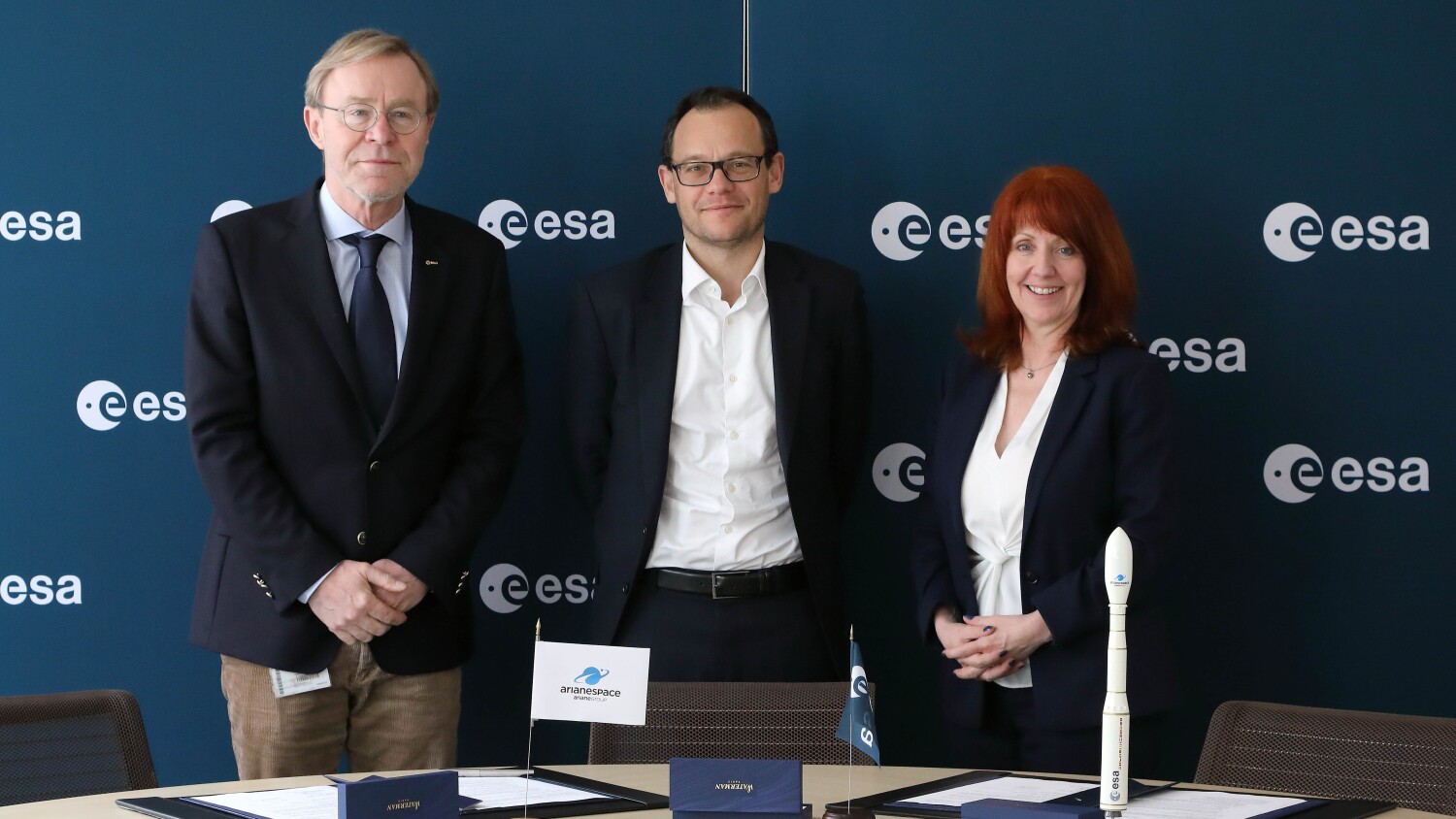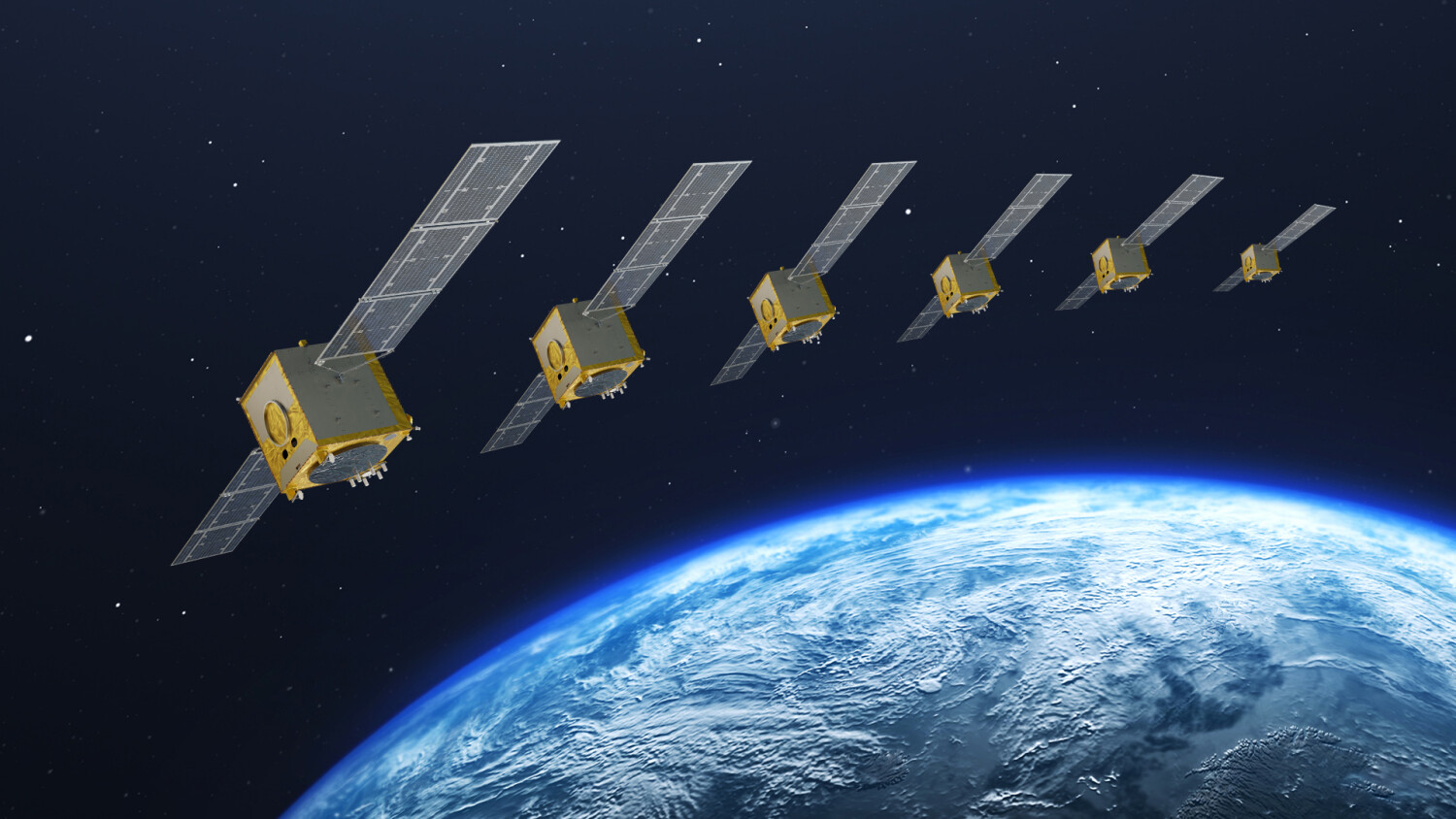On Friday evening, October 13, Arianespace placed two satellites into geostationary transfer orbit: DIRECTV 9S for the U.S. operator DIRECTV Inc., and OPTUS D1 for the Australian operator OPTUS.
The Ariane 5 ECA launcher was also fitted with the ASAP 5 platform, allowing it to deploy the LDREX-2 experimental reflector for the Japanese space agency JAXA.
29th Ariane 5 launch, 15th success in a row
The latest successful launch of an Ariane 5, the fourth in 2006, confirms that Arianespace sets the global standard for launch services, with solutions meeting the needs of operators around the world.
Today, Ariane 5 is the only commercial launcher in service capable of simultaneously launching two primary payloads, plus a scientific experiment, and giving customers the performance, flexibility and competitiveness they expect.
With this launch, Ariane has now boosted into orbit satellites weighing more than 600 metric tons.
Launches for loyal customers: United States, Australia, Japan
Arianespace’s selection by leading spacecom manufacturers and operators in the United States, Australia and Japan is clear international recognition of this top-quality launch service.
DIRECTV 9S is the sixth satellite to be launched by Arianespace for DIRECTV, Inc., the leading provider of digital multichannel TV service in the United States, following DIRECTV 1 in December 1993, DIRECTV 3 in June 1995, DIRECTV 4S in November 2001, DIRECTV 7S in May 2004 and Spaceway 2 in November 2005.
OPTUS D1 will be the third satellite orbited by Arianespace for the Australian operator. Arianespace launched OPTUS C1 in June 2003, after launching OPTUS A3 in 1987. SingTel, the parent company of OPTUS, had already chosen Arianespace for its own ST-1 satellite, launched in 1998.
This launch marks the second time that the Japan Aerospace Exploration Agency (JAXA) has chosen Arianespace for one of its technical experiments. Back in December 2000, the European launcher had already orbited the first experimental satellite of this type, LDREX.
DIRECTV 9S/OPTUS D1/LDREX-2 mission at a glance
The mission was carried out by an Ariane 5 ECA launcher from Europe’s Spaceport in Kourou, French Guiana. Liftoff was on Friday, October 13, at 5:56 pm local time in Kourou (4:56 pm in Washington, DC, 20:56 UT, 22:56 pm in Paris and, on Saturday, October 14 at 6:56 am in Sydney).
Provisional parameters at injection of the cryogenic upper stage (ESC-A) were:
Perigee: 249.4 km for a target of 249.5 km (±3)
Apogee: 35,940 km for a target of 35,946 km (±160)
Inclination: 6.98 º for a target of 7.0 degrees (±0.06º)
DIRECTV 9S was built by Space Systems/Loral in Palo Alto, California, and will be positioned at 101 degrees West. Weighing approximately 5,530 kg at liftoff, DIRECTV 9S is fitted with 52 high-power Ku-band transponders and 2 Ka-band transponders. It will provide direct TV broadcasts using digital compression technology. DIRECTV 9S will give American TV viewers a greater choice of broadcast services, while prefiguring tomorrow’s multibeam satellites for multimedia applications. Design life is about 15 years.
OPTUS D1 was integrated by American manufacturer Orbital Sciences Corporation in Dulles, Virginia, based on a Star-2 platform. OPTUS D1 will weigh about 2,300 kg at launch. Positioned at 160 degrees East, it will provide direct TV broadcasts, Internet links, voice and data services for Australia and New Zealand. Its design life is 15 years.
LDREX-2 (Large-scale Deployable Reflector Experiment 2), launched on behalf of the Japan Aerospace Exploration Agency (JAXA), is a small-sized partial model representing the large deployable antenna to be used on the ETS-8 technology satellite, which will be launched in December 2006.







